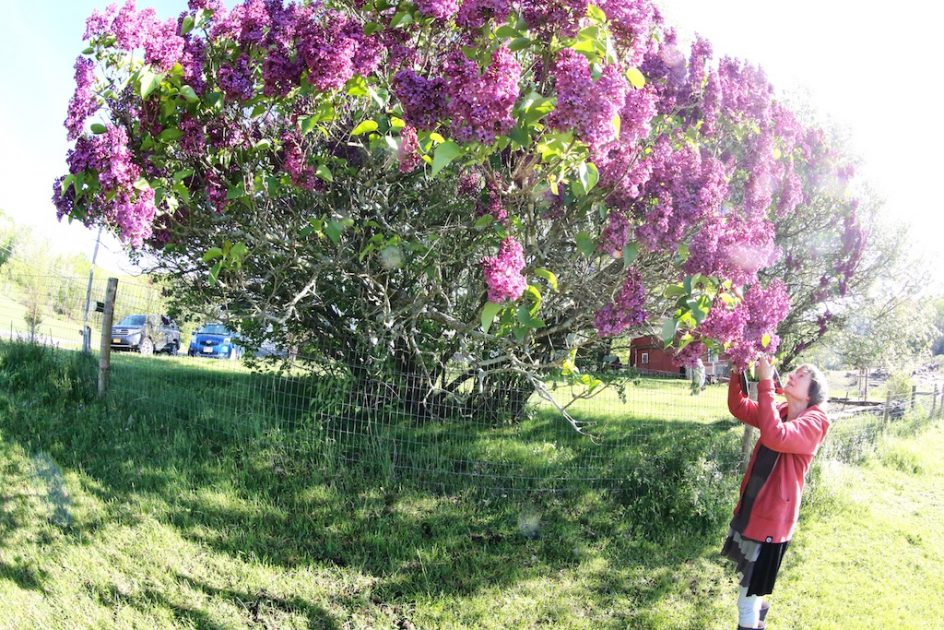
“When lilacs last in the door-yard bloom’d, And the great star early droop’d in the western sky in the night,
I mourn’d – and yet shall mourn with ever-returning spring.” – Walt Whitman
Thomas Jefferson loved lilacs and wrote about them in his gardening book. When Abraham Lincoln was assassinated, Walt Whitman used the lilac – it blooms only three weeks a year in the Spring – to write his famous elegy to the slain President, it was one of the most famous evocations of political martyrdom in literary history.
When Lincoln was killed, his train took several weeks to travel from Washington to Illinois, his birthplace. Along the way, tens of thousands of farmers gathered to wave and say goodbye. In his honor, and inspired by Whitman, lilacs were planted on family farms all across America, these hardy, humble bushes have become the enduring symbol of the family farm. Every year, in April, lilac bushes were planted to mark the day Lincoln was killed.
We have about five lilac bushes planted around our farmhouse, and the one above – Maria is cutting some lilac blossoms to bring into the house – and this one was almost certainly planted around the time Whitman wrote his beautiful poem, it is wide and deep and towers over the pasture.
Lilacs are the perfect symbol for the proud American Family Farm. They are hardy, require little maintenance and welcome Spring in a beautiful and fragrant way. There are all kinds of old farms built in many different ways, but almost all of them have a lilac bush to remember a leader that was dearly loved.
